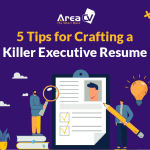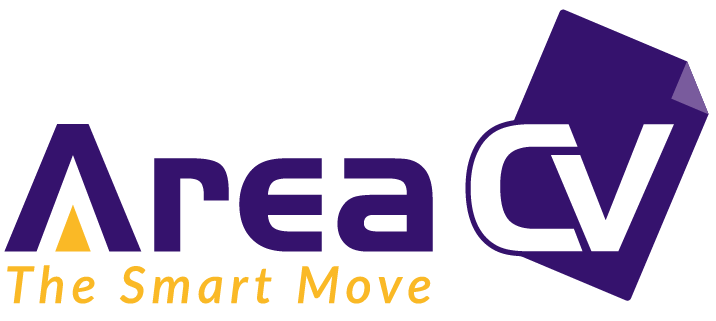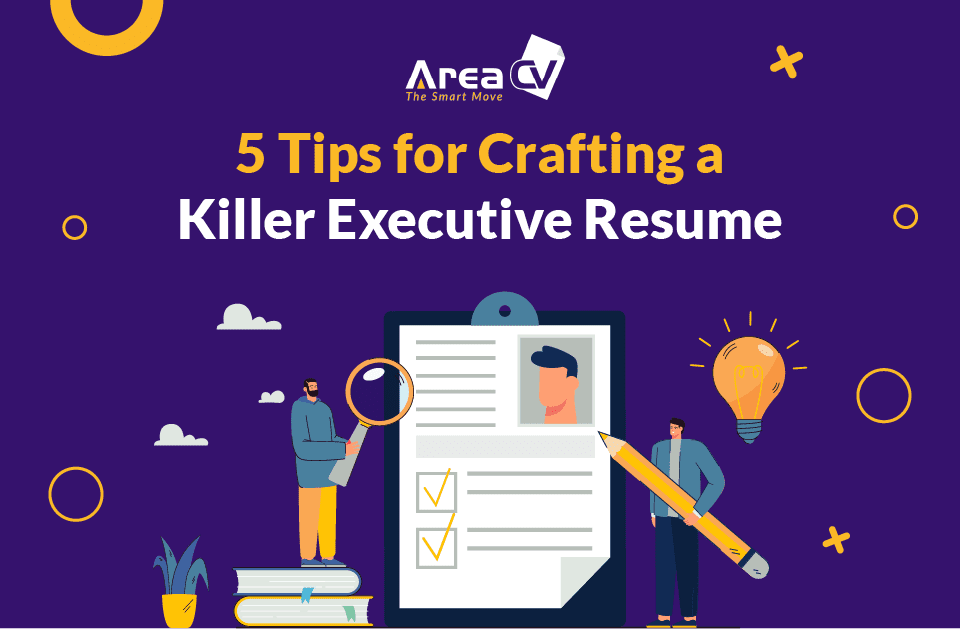
5 Tips for Crafting a Killer Executive Resume
April 25, 2024A resume is your representation to a potential employer which can lead to unleashing the door to an opportunity you might be thinking about for a long time. In my experience, I witnessed people stressing out about not being able to land an interview but not paying attention to the most crucial aspect which is their ‘RESUME’. In this era, it is nearly impossible for recruiters to meet every candidate over a phone call and learn about them, so the resume acts as a branding tool demonstrating your experience and professional life. This tool must nail in all aspects especially when we talk about an executive resume. In the resume world, we define resumes based on the level of experience, including entry-level resumes, mid-career level resumes, managerial resumes, executive resumes/C-Suite/VP resumes, career change resumes, federal resumes, and more.
Executive resumes are significantly different resumes than the rest in terms of tone, content, structure, purpose, and level of experience. After working on hundreds of executive resumes, I noticed people underselling their skills, experience, and knowledge by using a basic layout and verbiage. Here are a few main elements that differ an executive resume from other resumes and must be considered while creating one.
- Length of the Executive Resume
An executive resume is experience-enriched, concrete, and position-heavy in nature. An executive-level professional typically has 10 – 20+ years of experience and holds senior-level roles, such as CEO, CFO, COO, VP, or Director. There have been numerous myths regarding the number of pages for an executive resume, ideally 2 to 3 pages are sufficient to fit in with all the information. I have seen people with 4-6 pages of resume justifying their number of years of experience, but it should always be considered that the recruiter is not going to read a resume like a newspaper with a snack, he/she is going to spend a few minutes on it.
- Tone and Language
To my surprise, I encountered numerous executive resumes where people have used words like, “Handle’’, “Support’’, “Manage’’, these words can be used in other standard resumes but do not put much weight in an executive resume. The content used must justify the role and the level of experience. Using feeble words in an executive resume will underrate the professional. Strong action verbs must be optimized. To best explain it, here are a few examples based on the case:
Leadership: “Spearheaded,” “Orchestrated,” “Pioneered,” “Developed,” “Led”
Outcomes: “Achieved,” “Generated,” “Boosted,” “Expanded,” “Increased,” “Improved”
You cannot use the same verbs for an entry-level resume as it will overrate the skills and will leave an ultimately bad impression.
An executive resume should never include basic or generic skills. The summary and core competencies sections must go beyond simple tasks and soft skills. To ensure ATS compatibility and stand out to decision-makers, these sections must be concise yet powerful—highlighting high-impact leadership capabilities, a proven track record of results, and value-driven accomplishments that reflect strategic influence and business growth.
- Leadership & Networking Traits
Leadership is a core trait of a senior professional in any industry but in other standard resumes, it is not the case. It depends if the manager has been given the leadership duties and directed teams under him but in executive resumes, leadership qualities are a must! A fresh graduate from the university cannot possess practical leadership qualities obtained over time. Along with leadership and team building expertise, networking is also an asset skill for executives where they have been connecting, networking, and strengthening relationships to advance in their careers.
- Quantifiable Achievements and High-Impact Metrics
One of the main factors that segregate seniority in experience is the quantifiable contributions, although the quantifiable achievements are not limited to executive resumes, they serve as key elements. Executives are hired to deliver results and achieve business growth goals, the best way to glorify their contribution to the company’s success is to add numbers.
Examples of a few quantifiable contributions:
Augmented business annual revenue by $80M through implementing market expansion strategies across different channels.
Slashed operational costs by 20% through issue resolution, team restructuring, and planning.
- Format and Template Selection
Senior-level resumes demand a more strategic and tailored approach—both in content and design. Unlike standard resumes, executive documents must balance substance with sophistication. Format, layout, and structure are not one-size-fits-all; they should be customized to reflect the depth and breadth of your leadership journey. High-impact sections such as Career Highlights, Key Projects, Strategic Clients, Awards & Honors, and Professional Affiliations can elevate your executive brand when thoughtfully included. Additionally, design elements—such as font selection, color palette, spacing, and consistent formatting—play a critical role in positioning the resume as polished, professional, and boardroom-ready
Conclusion:
To stand out in the competitive job market, an executive resume should go beyond listing your experience – it must showcase leadership, strategic impact, and measurable achievements. Craft your resume with precision—leveraging dynamic, action-oriented language, and a clear focus on the strategic impact you’ve made in driving business growth. Keep it concise yet compelling, ideally within 2-3 pages with a layout that grabs the attention of the reader, while emphasizing leadership and networking expertise. By crafting a well-structured and results-driven resume, you can effectively position yourself as a top-tier executive candidate.




